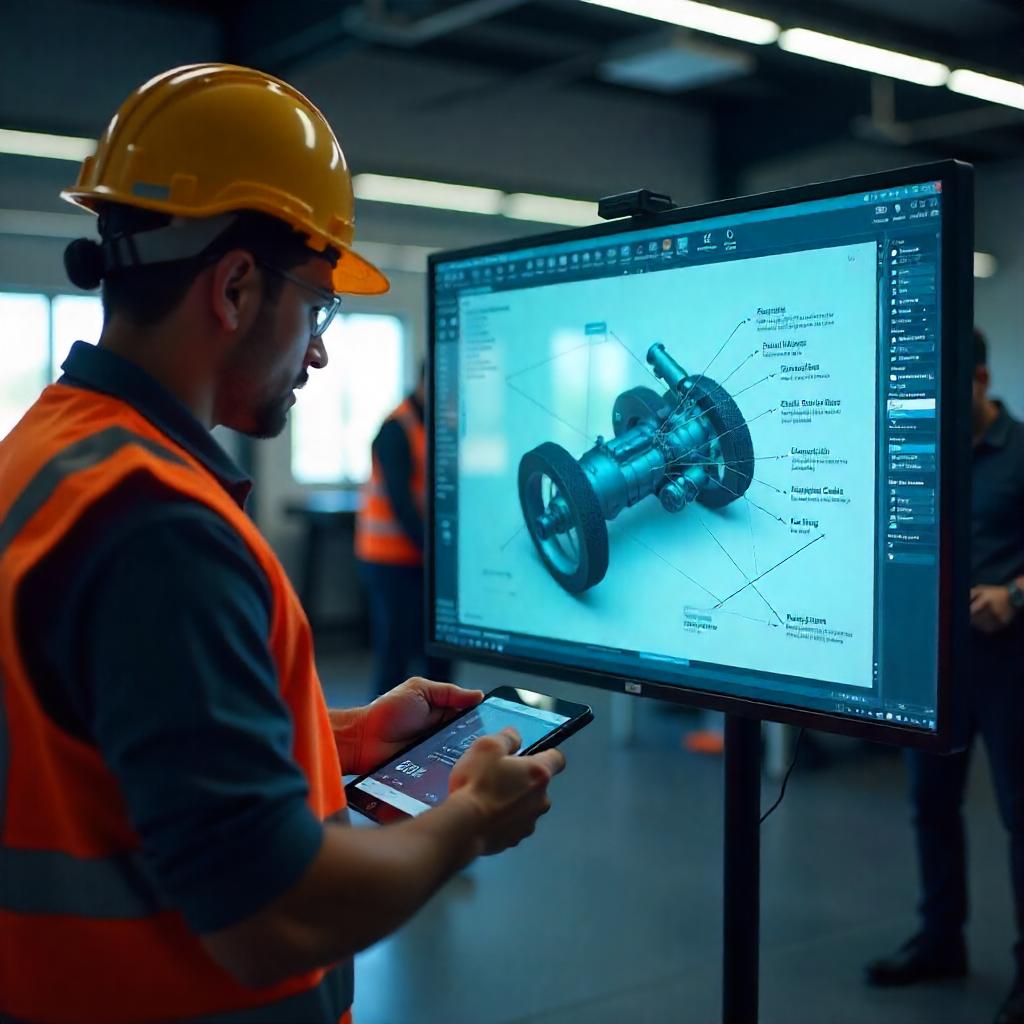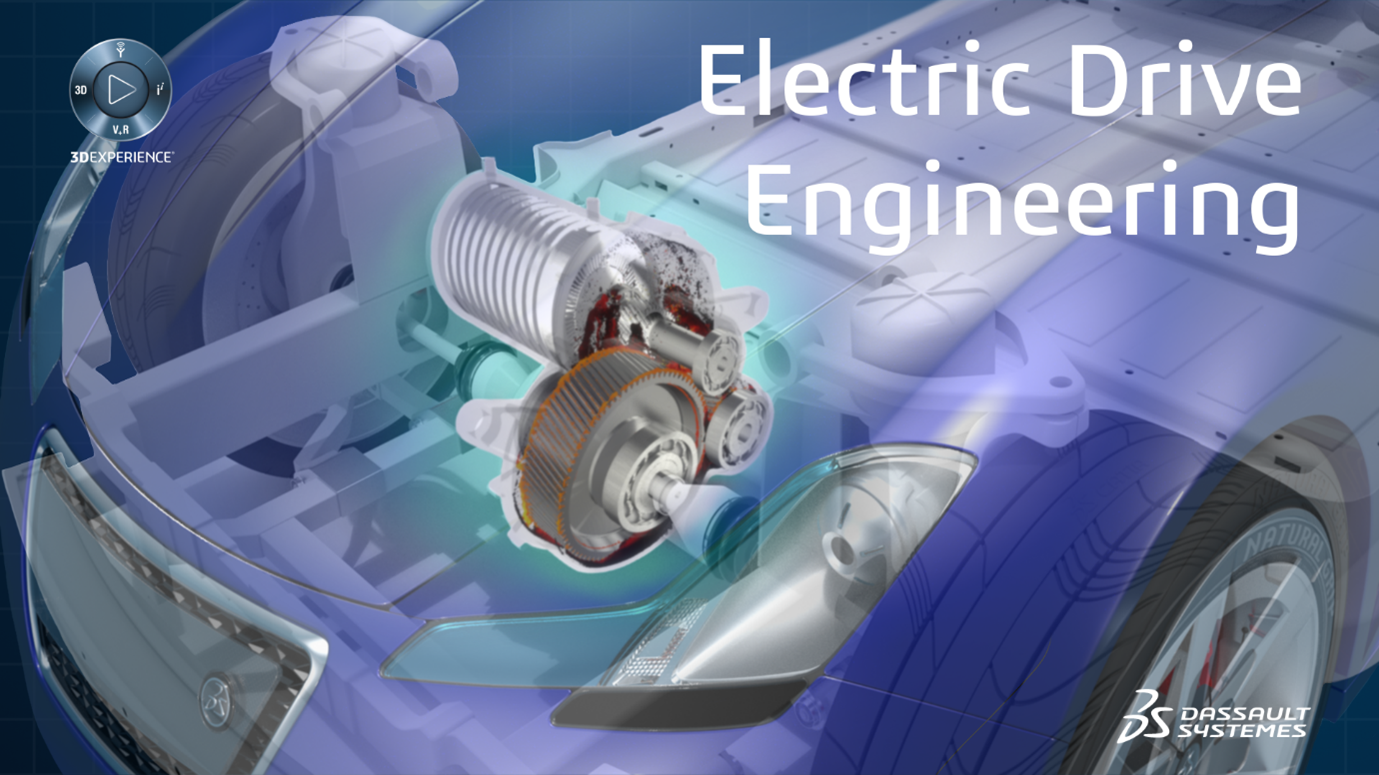Save Time, Cost and Improve Accuracy of your Work Instructions by adopting 3D Model-based approach

- Arpan Kumar
- October 12, 2020
While there are multiple Work Instructions formats, for the past few years, there is a debate on the suitability and applicability of the appropriate format. This might be the time to put that debate to rest. There are many studies which show that something which is graphic and in pictorial form is more likely to be understood and easier to use. Work Instructions are among the first things which are digitized in Industry 4.0. With the use of right application, it will be an important step for digital transformation and also have a significant impact on manufacturing operations.
What if one could deliver common Work Instructions of multiple configurations to the right people at the right time?
Shop floor deliverables have become much more accurate and precise by using 3D Work Instructions. This was not the case earlier. In the absence of 3D Work Instructions, organizations faced significant loss of time by imparting training to their workforce or making them understand how the system works. It is also not very easy to maintain Work Instructions on paper or in file format. If one compares this with digital Work Instructions, one can see that it is very easy to maintain and minimize the efforts of engineers. These Instructions can be reused for different configurations as well as for different locations considering how rapidly manufacturing processes get changed.
DELMIA Work Instructions help in making:
- Operations in sequence
- Standard links
- Part and tool list
- Product and tool list
- Markup visual aids
One can also make Work Instructions for machine maintenance, which is majorly of two types:
- Preventive Maintenance (PM) includes inspections, condition monitoring, services, and testing.
- Corrective Maintenance includes repairs and replacements.
Preventive Maintenance is further broadly classified into three types of tasks:
On-condition tasks – On-condition tasks are used to address specific failure modes of equipment and in most cases seek to determine the condition of equipment and more specifically identifying potential failures associated with the failure mode. This can include inspections, measurements, and condition monitoring.
- Fixed interval tasks – Fixed interval tasks are used to address failure modes where the wear-out or failure life is well known and the tasks are performed irrespective of the prevailing condition. These include component change outs that are either refurbished or discarded (as determined during the earlier task development stage), cleaning, lubrication, calibration, and adjustments.
- Failure finding tasks – These are used to detect failures of protective devices. These can be safety-related devices or equipment protection devices. Tasks can include manually activating the device such as pull wires on conveyors or limit switches, artificially simulating conditions for the devices such as using synthetic smoke to test smoke detectors, restricting flow for low flow switches, lowering, or raising levels for level switches, injecting electrical current into high voltage overloads or circuit breakers.
Corrective Maintenance Work Instructions
Work Instructions are only used for complex or difficult corrective maintenance. OEMs often provide detailed instructions for maintenance of their equipment in the form of workshop manuals or procedures.
Where a Work Instruction is required, it should contain:
- The equipment number and description at the lowest level in the equipment hierarchy.
- Equipment isolation and preparation for maintenance (such as releasing stored hydraulic pressure).
- A sequence and description of the tasks in sufficient detail so that there is no misunderstanding of what is required.
- Specifications pertaining to individual tasks (such as bolt tightening torque requirements).
- Warnings of potential hazards for the maintainer.
- Damage to the equipment while undertaking particular tasks.
- Tips on how best to undertake the task (such as positioning or handling).
- Pictures and diagrams can be very useful, particularly if uncertainty is likely while performing the task.
- Parts required including Stock Number or Manufacturer Number.
- Specific tools required.
DELMIA 3D – Work Instructions are increasingly getting adopted by organizations in the present digitized world. At EDS Technologies, we help organizations discover the value of this application and ensure a seamless integration with their digital manufacturing processes. We also encourage to our manufacturing customers to start with DELMIA 3D – Work Instructions which will reduce their time and effort significantly and thereby increase efficiency.


- Arpan Kumar
- October 12, 2020
Save Time, Cost and Improve Accuracy of your Work Instructions by adopting 3D Model-based approach
While there are multiple Work Instructions formats, for the past few years, there is a debate on the suitability and applicability of the appropriate format. This might be the time to put that debate to rest. There are many studies which show that something which is graphic and in pictorial form is more likely to be understood and easier to use. Work Instructions are among the first things which are digitized in Industry 4.0. With the use of right application, it will be an important step for digital transformation and also have a significant impact on manufacturing operations.
What if one could deliver common Work Instructions of multiple configurations to the right people at the right time?
Shop floor deliverables have become much more accurate and precise by using 3D Work Instructions. This was not the case earlier. In the absence of 3D Work Instructions, organizations faced significant loss of time by imparting training to their workforce or making them understand how the system works. It is also not very easy to maintain Work Instructions on paper or in file format. If one compares this with digital Work Instructions, one can see that it is very easy to maintain and minimize the efforts of engineers. These Instructions can be reused for different configurations as well as for different locations considering how rapidly manufacturing processes get changed.
DELMIA Work Instructions help in making:
- Operations in sequence
- Standard links
- Part and tool list
- Product and tool list
- Markup visual aids
One can also make Work Instructions for machine maintenance, which is majorly of two types:
- Preventive Maintenance (PM) includes inspections, condition monitoring, services, and testing.
- Corrective Maintenance includes repairs and replacements.
Preventive Maintenance is further broadly classified into three types of tasks:
On-condition tasks – On-condition tasks are used to address specific failure modes of equipment and in most cases seek to determine the condition of equipment and more specifically identifying potential failures associated with the failure mode. This can include inspections, measurements, and condition monitoring.
- Fixed interval tasks – Fixed interval tasks are used to address failure modes where the wear-out or failure life is well known and the tasks are performed irrespective of the prevailing condition. These include component change outs that are either refurbished or discarded (as determined during the earlier task development stage), cleaning, lubrication, calibration, and adjustments.
- Failure finding tasks – These are used to detect failures of protective devices. These can be safety-related devices or equipment protection devices. Tasks can include manually activating the device such as pull wires on conveyors or limit switches, artificially simulating conditions for the devices such as using synthetic smoke to test smoke detectors, restricting flow for low flow switches, lowering, or raising levels for level switches, injecting electrical current into high voltage overloads or circuit breakers.
Corrective Maintenance Work Instructions
Work Instructions are only used for complex or difficult corrective maintenance. OEMs often provide detailed instructions for maintenance of their equipment in the form of workshop manuals or procedures.
Where a Work Instruction is required, it should contain:
- The equipment number and description at the lowest level in the equipment hierarchy.
- Equipment isolation and preparation for maintenance (such as releasing stored hydraulic pressure).
- A sequence and description of the tasks in sufficient detail so that there is no misunderstanding of what is required.
- Specifications pertaining to individual tasks (such as bolt tightening torque requirements).
- Warnings of potential hazards for the maintainer.
- Damage to the equipment while undertaking particular tasks.
- Tips on how best to undertake the task (such as positioning or handling).
- Pictures and diagrams can be very useful, particularly if uncertainty is likely while performing the task.
- Parts required including Stock Number or Manufacturer Number.
- Specific tools required.
DELMIA 3D – Work Instructions are increasingly getting adopted by organizations in the present digitized world. At EDS Technologies, we help organizations discover the value of this application and ensure a seamless integration with their digital manufacturing processes. We also encourage to our manufacturing customers to start with DELMIA 3D – Work Instructions which will reduce their time and effort significantly and thereby increase efficiency.









